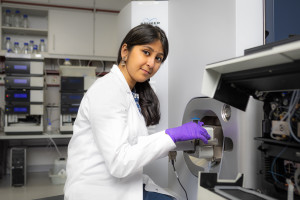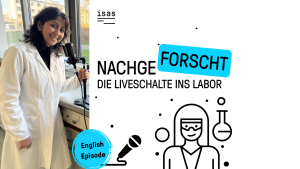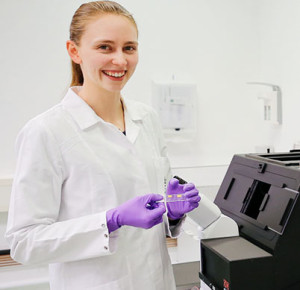Dortmund, 28th January 2025
“Overwhelming” – this is how Susmita Ghosh describes the feeling when she learnt that her grant application had been successful. Together with a cooperating partner, she has received 10,000 euros from the DFG Collaborative Research Centre TRR 332 »Neutrophils: Origin, Fate and Function« for her pilot project. The 28-year-old has been working as a doctoral student in the Biofluorescence research group since October 2021. The financial funding is the first grant of her career.
Under investigation: interaction between neutrophils and tumour cells
In her research, the biologist analyses proteins in neutrophil granulocytes. Neutrophils are a type of white blood cells and an important part of our immune system. However, in situations such as strokes, heart attacks or cancer, neutrophils can also turn against us and worsen our state of health. Ghosh wants to find out why that is the case. Her pilot project »Dissecting the neutrophil-tumor cell interactome using SILAC-labelling«, supported by TRR 332, will investigate how neutrophils and cancer cells interact. Ghosh submitted the grant application together with Dr Claudia Tulotta from the Institute of Experimental Pathology at the University of Münster. Of the financial support, 4,000 euros will go to Dortmund for Ghosh's research in the pilot project and 6,000 euros to Münster.

Susmita Ghosh joined ISAS as a doctoral researcher in 2021. The then 25-year-old ventured from Kolkata (India) to Dortmund for her dissertation in the middle of the pandemic. She shares more about this in an interview on ISAS Kompakt.
© ISAS / Hannes Woidich
Ghosh would also like to thank her supervisors Prof Dr Albert Sickmann and Prof Dr Matthias Gunzer – “not only for their support, but also for their feedback on the project. I am absolutely convinced that criticism makes us better.” She sees her future in science. Another reason, why the funding is particularly important to her: “My goal is to lead a research group one day. The grant for this pilot project is a small but very important step on my career path.”
(Nadine Kuhnen / Sara Rebein)








